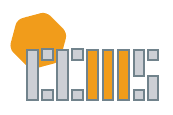Abstract / Synopsis
Communicating and making sense of large numbers — millions, billions, and trillions — is a persistent struggle in our society. Using large numbers is a learning requirement for elementary school children, but even adults struggle with it. Hence supporting future teachers in developing their own understanding of the concepts is valuable. To construct, enact, and revise an educational experience for preservice teachers, we apply three frameworks of teaching mathematics for social justice tasks, high cognitive demand tasks, and productive mathematics discussion. The context uses United States educational and defense spending, the national budget, and the gross domestic product. Preservice teachers talk to family members outside of the classroom about large numbers. In class, they read arguments that compare educational and defense funding using the U.S. federal budget (defense receives much more federal funding) to educational and defense spending using the U.S. Gross Domestic Product (educational spending, at local, state, and national levels is much more than defense spending). Through action research, we implemented, revised, and adapted the task several times. We present the completed task and preservice teacher responses.
DOI
10.5642/jhummath.KQLP5695
Recommended Citation
Eryn M. Maher, Ha Nguyen & Cynthia Sanchez Tapia, "Millions, Billions, or Trillions: How to Partition Large Numbers into Friendly Figures," Journal of Humanistic Mathematics, Volume 14 Issue 2 (July 2024), pages 242-263. DOI: 10.5642/jhummath.KQLP5695. Available at: https://scholarship.claremont.edu/jhm/vol14/iss2/8
